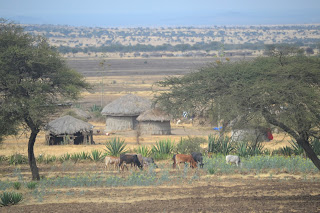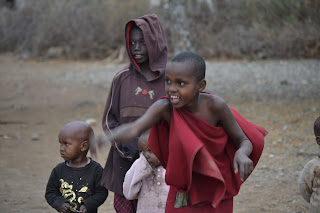Candor
and directness play a central role in my life and in my work with businesses. Call
me too impatient to tolerate beating around the bush and delaying the
inevitable – there’s certainly some truth to that. There is more, however. It is my strong belief that numerous
misunderstandings, mistakes, and conflicts can be prevented if only you and I
were clear, direct, and candid in our conversations. This, of course, starts
with being candid with yourself instead of being seduced by the often attractive
trap of self-deception, immediately followed by a solid foundation of respect
and trust. When all this is in order, an honest ‘say-it-straight’ approach increases
transparency and improves communication, collaboration, and effectiveness in
the workplace and anywhere else? Or does it?
For
anyone who has heard one of my recent presentations in the Twin Cities or who
has received leadership or other coaching from me, you know how I operate. I
leave no question unasked and no observation un-shared just because it might
hurt the person’s feelings or because ‘it’s not-done here’.
Please keep
the above in mind while I take you 17 flight hours and about 8.250 miles from
Minneapolis to Northern Tanzania.

After an
adventurous road trip from Nairobi to Arusha, a few days in this 516.000 people
city, and a most spectacular 9-day tent safari in five different parks, we were
ending our vacation in a Maasai village. Not one of those settlements that you
see along the road, where cars with tourists stop for an hour to see a dance
and buy handmade bracelets. This can be fun I’m sure, but I had arranged a real
introduction to Maasai living. So our safari guide Rafael dropped us off along
the main ‘road’ and handed us to someone called Ole. All we knew beforehand is
that he is the doctor of his village and responsible for 47 additional ‘hospitals’
in an area the size of our home country The Netherlands. Oh, and one more
thing, I was warned by the Dutch team planning our trip and this Maasai visit: “Be
careful not to express discontent because the Maasai take this personal and
wonder what went wrong.” We were surprised, discussed this with our three
children (ages 13-16) and were good to go.
Within
ten minutes into our ride from the main road to this remote village, the friendly
and freely talking Ole, who later turned out to be our host and ‘guide’ for the
two days, asked us to comply with a request. While navigating a sandy, stony
path Ole said, with a serious look on his otherwise friendly face: “If you see
or hear something that you like, please tell me. If you see or hear something
that you don’t like, don’t tell me. Can you do that for me?” I am sure you can
imagine the ‘unusuality’ of this request and the forces pulling on my natural
response-style (keep in mind: psychologist, well-traveled, curious, candid,
direct …). So I tamed my urge to fire a dozen questions and to enquire about
the ‘why’ of the request and heard myself agree. Can you believe it?
Our two
day stay at this Maasai village, without any tourist shows and without the
otherwise so persistent pleas to buy their jewelry, were the most impactful of
our trip, for me at least. Not the most spectacular, because it’s immensely
hard to beat a group of ten lions passing your car with three cubs playing 4
feet away from you and the whole group hanging around for fifteen minutes. It’s
pretty tough to beat numerous close encounters with elephants, giraffes,
different kinds of monkeys and deer, exotic and strange looking birds, agama
lizards, hyena’s, and wildebeests. Or zebras, baboons and buffalos passing our
tents…. Yes, it was overwhelmingly spectacular and I am tempted to share all
we’ve learned about Tanzania’s history, the amazing wildlife, it’s people,
economy, values, customs, and struggles. I will resist that temptation and
stick to the topic of candor and the Maasai. And I can be brief and tell you,
that we understand so little of each other’s worlds, values, and ways of believing,
thinking and communicating. So in all honesty, I can’t tell you to what extent
and in what way the Maasai appreciate candor and directness or how they would
define it, if the concept of candor exists at all.
On the
surface it seems that candor isn’t much appreciated, but we really don’t know. Simply
because we don’t exactly know how to interpret many of the interactions and
responses that we experienced. I do
know that our relationship with Ole grew deeper and stronger with every meal we
spent together, and during our 5am walk to two villages in the pitch dark
through brush lands and hills, open to all the wildlife that surrounds Ole’s
territority. I quickly learned that I increased my chances of getting an
immediate response to my question if I asked ‘permission’ to ask a question. I
learned that repeatedly verbalizing our gratitude (which we of course felt
deeply) for all his time spent with us, for taking us on his ‘working morning’
and for all the information he shared with us seemed greatly appreciated. It
deepened our conversations and gradually made them more two-way. I learned that
all the laughing that took place between Ole and village elders upon him
translating our answers to his questions, could have so many different
meanings. Yes, it felt unfriendly and even insulting at first, but what do we
know? Little. Very little. And it goes beyond western ‘knowing’ of course.
We do know that the Maasai that we met,
loved to laugh. What we don’t know is the function of laughing in Maasai
culture. Could it be to show respect towards us? Might it be a demonstration of
hierarchy and leadership? Is it possible that we witnessed a candid sign of
surprise about the content of our responses? There are of course so many more
possible theories. Belief me, we (or should I say ‘I’) asked as many questions
about drives, values and customs as seemed appropriate and some provided a
response to these questions. It still left us with more questions than answers,
how beautiful is that?
Ole regularly
verbalized black-and-white and what we consider negative notions of customs of ‘you Mzungos’ (white people). Without knowing
how to interpret literal words and without knowing his sources, how should we
read this? We learned that the Maasai view men and women very differently than
most of us do, and that they are treated very differently. To us it felt as if
Ole’s preconceived notions about ‘the West’ were accepted criticism while we
were asked not to criticize nor show discontent. But were we reading this correctly,
and what is ‘correct’ anyway? From whose perspective?
Something
I really do know is that we were
fortunate to be invited into the Maasai world – their world, to stay for two
days. We got the impression that not all visits by Mzungos had been positive experiences
for the Maasai, and that Ole now only accepted visitors through our guy. We
learned we were the third party in eight months to visit Ole’s village, and the
first one with children. I wouldn’t be surprised if western directness (which
is generally less than my directness) might have been much too direct, too
quick, too judgmental, and too much of a “we know better what’s best for you so
let us help you (i.e. tell you)” – mentality.
In short,
there was so much to this visit and to all the conversations with Ole. There
was so much to all the walking, visiting the hospital and school, throwing ball
with the children and to all the customs such as tea drinking in the cow pen
just after daybreak. So much more than we can understand and grasp let alone
interpret ‘the right way’. I can easily state that this is one of the biggest
experiential lessons in my life and that there is a whole new meaning to not judging
a Maasai until you’ve really walked their shoes (which we of course haven’t).

Things
aren’t always what they seem. They often are not. Maybe we were asked not to
criticize while being criticized by our host and his leaders, or were they
merely showing their interest and were they honestly telling us what they know
of us Mzungos? One such example: “I hear you Mzungos watch TV for four hours a
day and don’t have family meals anymore…” Knowing that our family spent three
years without a TV when our children were 7, 10 and 10 and that we highly value
family time at the dinner table with stories and home made meals, this one was
difficult to digest and, of course, I gave Ole our version of TV and the social
function of meals. Either way, without knowing the unwritten rules when
conversing with such a high-placed Maasai leader, without knowing the exact
etiquette as a guest to the Maasai, without knowing whether ‘you Mzungos’ really
refers to all us Westerners, without knowing how long ‘establishing trust’
takes and what it exactly entails in this culture, it is hard to really say
anything about the role of candor in Maasai culture, and about how to interpret
some of the unexpected and unusual responses and encounters we experienced.
What I do know is that we often
mistakenly think that we know how to read and interpret people, I do know that we always have so much to
learn, listen, and wonder (in a non-judgmental way, please), wherever we go,
with whomever we converse. And I do know
that my family and I greatly appreciate Ole’s hospitality, his precious time
and the valuable ‘food for thought’ he provided us with.
